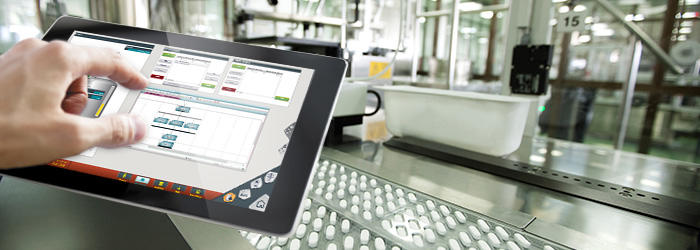
The consequences of a cyberattack in an industrial system
Today, the issue of cybersecurity is very sensitive.
Indeed, acts of cyber malice are multiplying. Hackers seem to be much more energized.On top of that, the terrain is very favourable to them. Indeed, digitization is becoming more and more increasing. Businesses and organizations continue to organize themselves around digital solutions to improve their competitiveness but also their efficiency.
This article will also interest you: The security of increasingly complex industrial networks
Among many others, another question or even concern raises questions. It is the computer security of industries.
"The last twelve months have been marked by an unprecedented upsurge in ransomware attacks (see here), including in the industrial sphere. Operational Technology is a different area of so-called "Information Technology" cybersecurity – at the same time as many of its problems. "says Guy-Philippe Goldstein , a cybersecurity researcher and consultant, who is also a contributor to the academic journal of the Institute for National Security Studies in Tel Aviv and a strategic advisor to the ExponCapital venture capital fund. He also worked at the school of economic warfare.
In short, it can be summarized that industrial computer systems are generally less mature in terms of cyber threat prevention.
"The COVID-19 pandemic has had a huge impact on ransomware targeting industrial organizations and their operational technology (TM). One of the fundamental reasons is the speed at which the networks have opened up. This speed has not always allowed the introduction of appropriate security measures.And it didn't take long for cyber criminals to take advantage of it. Danny Bren, former head of IT security for the Israeli army, explains in an interview, and the founder of Otorio, an Israeli-Austrian firm specializing in computer security for industrial systems. "However, as of 2019, we have seen an exponential increase in OT/IT ransomware attacks. Several factors explain this trend. On the one hand, the race for digitization and automation (also called Industry 4.0). On the other hand, THE IT-OT convergence (note: the greatest communication between industrial systems and so-called generalist computing). In addition, OT networks have developed differently from computer networks and have been slower to open up to the Internet. continues.

In addition, it has been pointed out and observed by several cybersecurity experts that industrial networks fairly easily favour computer attacks. And for good reason it lacks maturity of the "OT" sector. "While cybersecurity is quite mature, OT security is only really developing now. The "OT" network therefore offers an easy target for cyber criminals. Especially since industrial companies are more susceptible to ransomware attacks because of their direct impact on the company's ability to make money. When a production line is shut down, there is no "save" to restore operations. Systems must be put back fully "online." This makes industrial companies more likely to pay a high ransom – and the attackers know this well. Finally, criminals are more sophisticated. We are dealing with organized cybercrime, which uses advanced tools that until recently were often only available to nation-state actors," says Bren.
With the increasing use of remote collaboration tools, computer systems around the world have become much more vulnerable. In the context of industrial networks, this can be a real problem. A problem that is not without solution as the former head of security of the Israeli army explains: "Remote maintenance has become fundamental. However, industrial organisations must have full control over all access to their production environment, or risk "giving the keys" for their most sensitive operations to their subcontractors. This includes using tools to monitor, audit and control remote access tool connections; verify that these tools are themselves well-updated, for example using vulnerability bases such as B-R Vulnerability or mB Connect Vulnerability; continue to check the cybersecurity quality of subcontractors, especially by not forgetting that a supplier without known vulnerabilities is not necessarily safe – or that the machines of a third party… may include fourth-part parts! ».
On the responsibilities side, corporate executives are often singled out. According to a study provided by Gartner, 75% of CEOs are likely to be my resident IT security managers by the year 2024. This is a reality that suggests several problems that need to be solved now.
Now access an unlimited number of passwords!